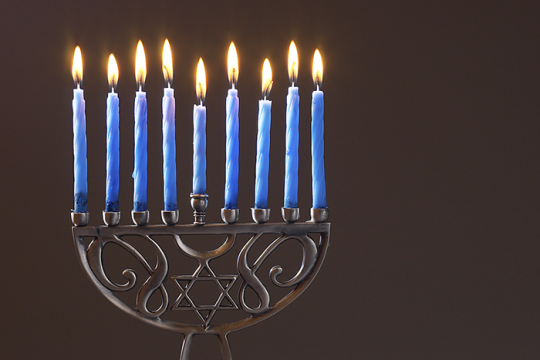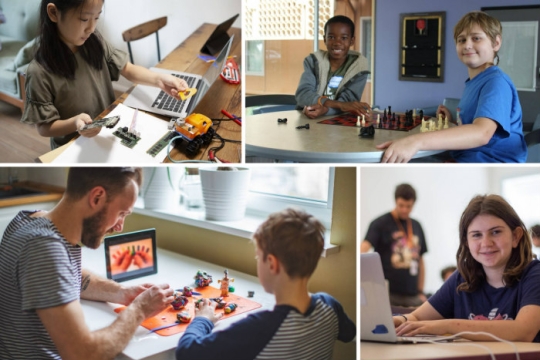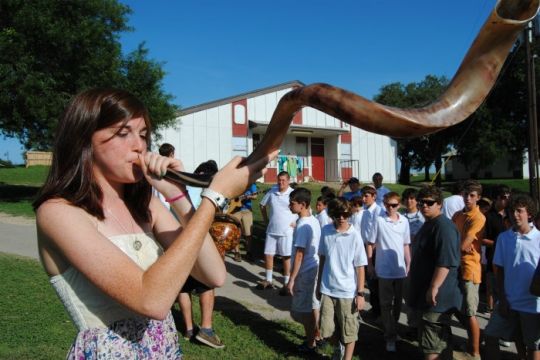
I remember the Purim celebrations of my youth: homemade cardboard crowns wrapped in aluminum foil; groggers fashioned from Styrofoam cups, dried beans, and masking tape; my brothers dressed in bathrobes, beards and mustaches sketched on their faces. As in many other congregations, our Purim carnival was run by the youth group as a fundraiser, and when I reached high school, I became a planner instead of a participant. We planned games and activities that sounded like fun to us teenagers and would be enjoyed by the religious school kids who were our target audience. Neither preschool children nor their parents were part of the planning equation.
Fast forward 15 years. I was attending Purim celebrations and carnivals with babies of my own, in search of an experience that would be fun and meaningful for me and my little ones. In addition to dressing up my babies in cute costumes and toting them with me to hear the M’gillah-reading in the evening, our Purim carnival included a separate, quieter room with toddler-friendly games. We even had a small petting zoo in the social hall. Best of all, I could make a break for home before naptime.
Then, we became “homeshulers” for a few years.
Though my kids were enrolled in a Jewish preschool, and we were regulars at a number of synagogues around town – attending Shabbat services and holiday activities that fit our family’s sleep and eating schedule – it fell to me to make the holidays festive. Each holiday season, I brought out our collection of books; I searched iTunes and OySong for holiday music and searched for recipes on cooking blogs. What we were missing was a congregation that would help us create a meaningful Jewish experience both for our children and for us as parents, within a community of other families with whom we could connect.
Today, as part of my work in the Reform Movement, I facilitate two URJ Communities of Practice that help congregations innovate and experiment with new ways of engaging families with young children. Congregations learn to meet families where they are and invite them to take a step closer to Jewish life. We ask ourselves tough questions and try to meet the needs of people in this audience at a crucial stage of their Jewish identity development.
We wondered: What would it look like if synagogues went beyond traditional, we’ve-always-done-it-this-way celebrations and instead looked at holidays from a family’s perspective? Here are five ways your congregation can go beyond the Purim carnival to help families enrich their Jewish lives, both at home and as part of our communities:
- Create accessible, kid-friendly services: Having special carnival activities geared towards toddlers isn’t the only way to make Purim accessible. North Shore Congregation Israel in Glencoe, IL, schedules Purim activities so families with young kids (including kids with disabilities) can enjoy the festivities early in the morning, before the biggest crowds arrive.
- Meet the needs of the whole family: Temple Beth El in Charlotte, N.C., runs two concurrent Purim activities for different audiences, followed by a communal dinner for both groups together. In Norfolk, VA, Ohef Sholom Temple’s family-friendly event Purim on Purim offers parents an opportunity to learn about the deeper themes of Purim and take that learning home. Other congregations approach accessibility differently. Congregation Rodeph Sholom in New York, NY, for example, has developed Shireinu (Our Songs), worship services for people with disabilities and their families. These services are open to members and non-members, providing families with opportunities to worship together in an accessible, interactive, and sensitive environment.
- Engage children through Jewish stories: You can create an entertaining educational experience for children by hosting story time. PJ Library® offers Jewish books for families raising young Jewish children from ages six months to eight years, and your congregation can highlight a book especially about Purim. Don’t forget to give children and their parents the opportunity to hear the most classic Purim story of all – the M’gillah!
- Use social media to expand the Purim experience: Your synagogue can reach a broad audience through its social media channels. Wendy Goldberg, director of spiritual engagement at Shir Tikvah in Minneapolis, MN, lists her favorite contemporary holiday songs on her Facebook page, including links to purchase and download music. Rabbi Phyllis Sommer, director of congregational learning at Am Shalom in Glencoe, IL, uses Pinterest to create holiday recipe boards and invites friends to bake hamantaschen at home through her tantalizing posts.
- Reach out to the unaffiliated: North Shore Congregation Israel in Glencoe, IL, markets its Purim carnival beyond the existing membership, using it as a vehicle to reach unaffiliated families in the community. At the carnival, they gather attendee names through a raffle and use that information to invite non-members to future events.
This Purim, may these and other strategies help bring young families in and around your community closer to Jewish life. With their involvement, may your congregation be enriched and enhanced for all.
Have something to say about this post? Join the conversation in The Tent, the social network for congregational leaders of the Reform Movement. You can also tweet us or tell us how you feel on Facebook.
Related Posts

Hanukkah Highlights Activity Book

Expand Your Congregation’s Reach: New Arts & STEM Online Programming for Jewish Families

